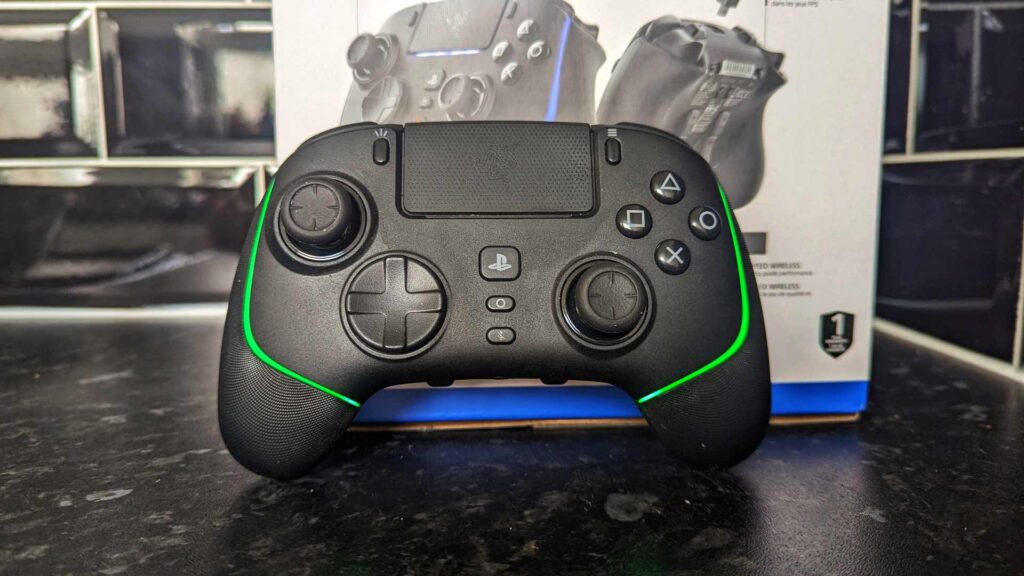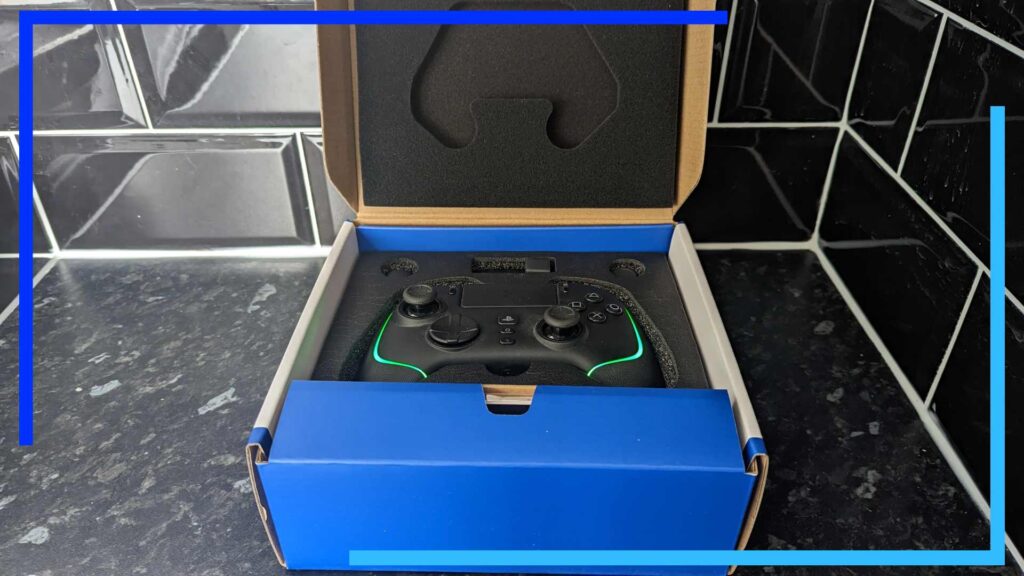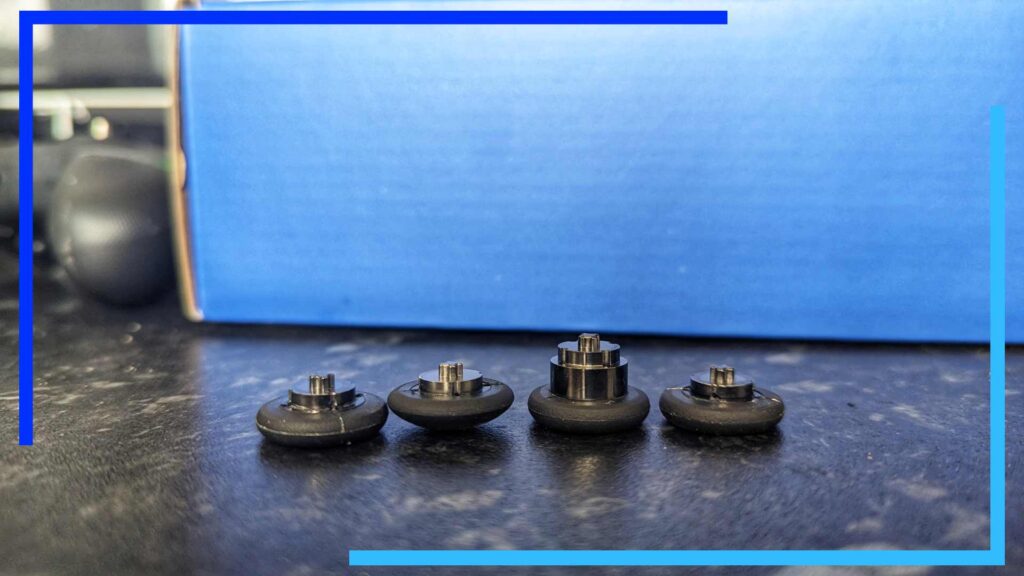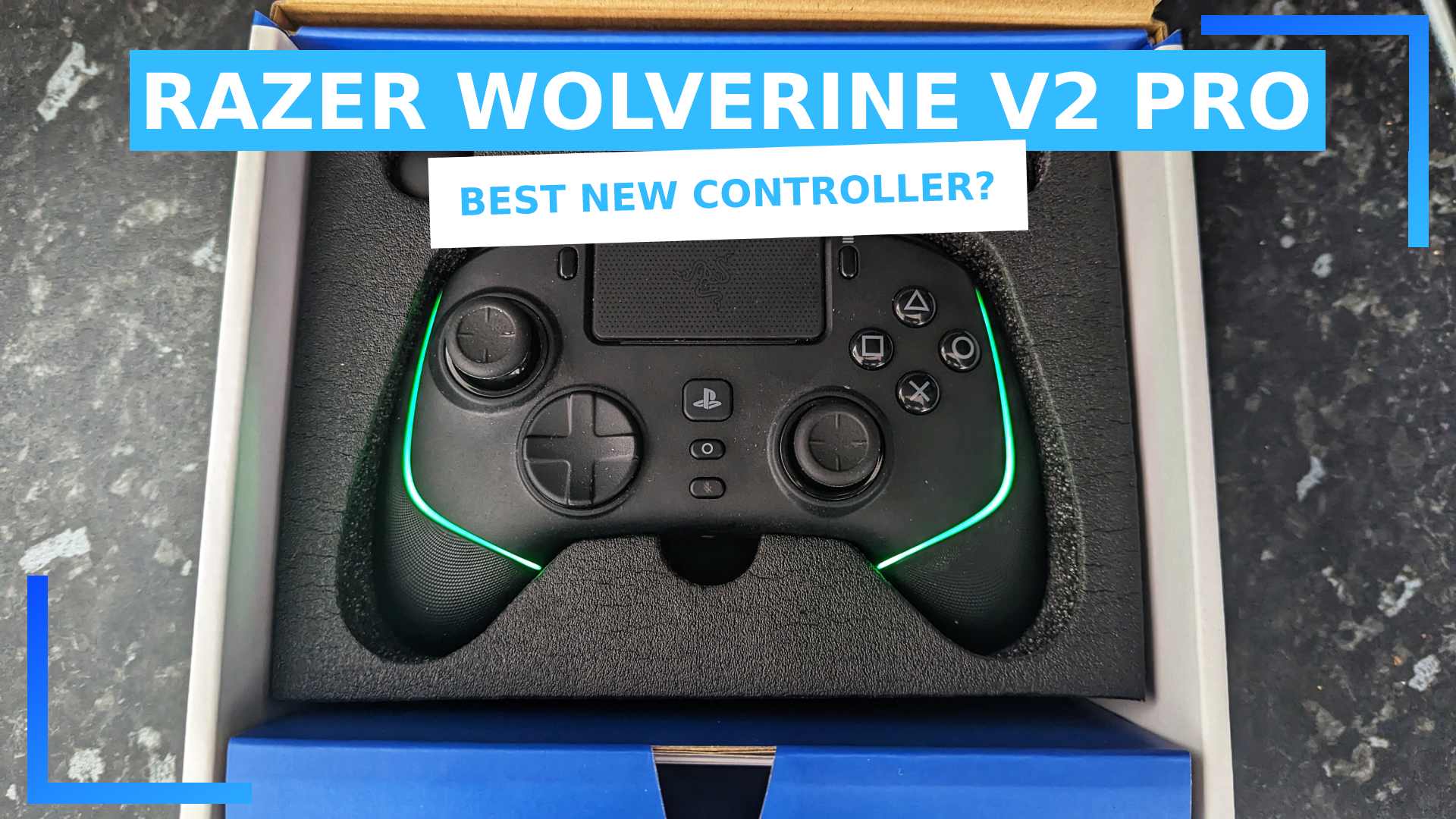Razer is known for making gaming accessories across a wide array of price points. If you want budget, Razer has something. And if you want to spend a little extra, the tech Razer creates often justifies the price difference.
But how does a $249 deluxe controller fair in a world with so much choice? Can Razer justify the price tag with clever and innovative tech? Find out as I go hands-on with the Razer Wolverine V2 Pro.
Razer Wolverine V2 Pro Features

The Razer Wolverine V2 Pro is designed for serious gamers. It offers up a level of precision regular controllers simply can’t hit.
One of the big differences is the use of what Razer calls mecha-tactile action buttons. In simpler terms, this means the distance between the top of the face buttons and the mechanism that registers the press below them is much shorter.
Whereas a third-party controller can register button presses upwards of 20 milliseconds, the Razer Wolverine V2 Pro takes just 10.
You can instantly feel the difference as well. It’s not something most will ever have thought about, but when you’re switching between the standard Dualsense controller and the Razer Wolverine V2 Pro, you can feel just how much quicker the button clicks into place.
The downside is buttons do make an audible click when pressed, but it’s still quieter than the Xbox Series X controller, and the good far outweighs the bad.
Razer took this idea one step further and applied it to the triggers. Known as Razer Hypertrigger, the controller features two switches on the back that correspond to each trigger. Flick the switch and the trigger will only require around a tenth of its pull to activate.
For shooters, this is a game-changer. Games like Fortnite require half presses of the trigger to fire. With the Razer Wolverine V2 Pro, you can fire shots or aim down scopes marginally faster, giving you an edge when it comes to drawing.
Where Razer leaves the likes of the Dualsense in the dust is the eight-way microswitch directional pad. The Dualsense often struggles when it comes to fighting games thanks to a D-pad that can’t decide on directional input. The Razer Wolverine V2 Pro, meanwhile, offers direct feedback – I could always tell exactly where I was during a button press. Pulling off a Shoryuken in Street Fighter II is now child’s play.
On top of all of the above, the Razer Wolverine V2 Pro also boasts six customizable buttons and interchangeable thumbsticks.
The customizable buttons are a godsend for games like Overwatch when you need to be able to crouch and release to hit certain attacks (like Mercy jumping). Alternatively, if you suffer motor issues in your fingers, being able to remap the top bumpers or back triggers to something else provides a level of accessibility regular controllers don’t.
The thumbsticks are what they are. Some people will get a lot of use out of them, others – myself included – won’t. Also included with the two standard concave thumbsticks are a convex stick for sprinting and another convex grip with a longer stick.
As someone who dislikes both longer sticks and convex sticks, I’m not a fan, and the Razer Wolverine V2 Pro magnetic extra sticks didn’t manage to win me over. That said, I am impressed with how the integration works. Being able to flick a thumb cap off then drop a new one into place, and having it all held together by magnetism, is pretty cool.
The fact there’s no need for a screwdriver or any kind of unscrewing is a testament to how much Razer gets it.
Razer Wolverine V2 Pro Look and Feel

I’ve been using the Razer Wolverine V2 Pro across an array of different consoles and the thing that stands out to me is how comfortable it is.
Despite having back buttons, there’s enough distance between them and the main grips that if you don’t want to use them, they never get accidentally touched by your other fingers. And should you want to use them with your ring fingers, they’re placed in a way that feels natural.
The same goes for the extra nubbins on top of the controller. Button and trigger placement feels natural and intuitive. If you need to reach for any of the new buttons you don’t need to think about it – or worse – look at the controller.
The textured grips around the main handles bring what people love about Xbox Series X controllers, too. The Razer Wolverine V2 Pro truly is a delight to hold.
The chroma RGB lighting adds a sense of premium to the controller. Options here include the standard one color, a breathing function, or you can turn it off to increase the battery life to godly levels. This is all changeable within the Razer app, which is also where you can change the customizable buttons.
In my testing, it takes a few attempts to connect to a mobile device, but it’s not a major issue. When it does connect, it works without problems. Plus you can switch between different profiles on the fly, which is definitely useful depending on the genre of game you’re playing.
Razer Wolverine V2 Pro Compatibility

The Razer Wolverine V2 Pro is designed first and foremost for PlayStation 5. It lacks any vibration function on PS5 and doesn’t feature adaptive triggers.
Vibration or some sort of rumble function would have been nice. Especially given the price. But it’s not the end of the world for me. With the Dualsense controller, the rumble is the first thing I turn off to save battery life, so I can understand why Razer hasn’t implemented it.
As for the adaptive triggers, I can’t mark Razer down on this. The adaptive trigger tech is something that’s patented by Sony, so other companies simply can’t use it freely.
That’s a bummer, but it is what it is, and I can’t mark Razer down for it.
Moving on, if you’ve ever read RetroResolve before, you know exactly where this is going.
After much testing, I can confirm the Razer Wolverine V2 Pro works on the Steam Deck. Originally, the Deck picked it up as the Xbox version of the controller, meaning the touchpad didn’t work. However, a new update is currently in beta that adds almost full compatibility.
The back triggers all work as they should, as they’re set in the Razer app rather than on the Steam Deck, and the touchpad works pretty much identically to the Dualsense controller now. The only minor issue is due to it being dongle-based you will only be able to use it while the Deck is docked, but that’s where most people will be using a secondary controller anyway so it’s all good.
Battery Life

This is where things get good. The Razer Wolverine V2 Pro aims to hit around 10 hours of battery life with chroma lighting enabled, and a massive 28 hours without.
During my testing, I managed around nine and a half hours of battery life with chroma on, and just under 27 hours with it turned off. There are, of course, multiple factors that go into battery life, but I’d wager that Razer’s estimates are accurate, meaning the Razer Wolverine V2 Pro houses one of the best batteries out there.
| Battery Life Comparison | |
| Razer Wolverine V2 Pro | 10/28 Hours |
| Dualsense | 6 to 8 Hours |
| Dualsense Edge | 5 to 6 Hours |
| KingKong 2 by Gulikit | 25 Hours |
| Victrix Pro BFG | 20 Hours |
Razer Wolverine V2 Pro Price Comparison
The Razer Wolverine V2 Pro comes in at $249.99/£249.99. For the casual gamer, this is arguably too much for a controller, and that’s fine. The Razer Wolverine V2 Pro is clearly designed as a premium product for those who want the best of the best. It’s for people who care about high precision, pin-point accuracy, or just want an advantage over rivals.
I feel like I need to whisper this next bit: It’s not that expensive given what it offers. Before you shout at me, keep in mind the Scuf Reflex controller can reach upwards of $360 and the Dualsense Edge, complete with a shorter battery life, is only $50 cheaper at $199.99. You can kind of understand how that $249.99 price tag makes sense.
| Price Comparison | |
| Razer Wolverine V2 Pro | $249.99 |
| Dualsense | $69.99 |
| Dualsense Edge | $199.99 |
| KingKong 2 by Gulikit | $69.99 |
| Victrix Pro BFG | $179.99 |
| Scuf Reflex | $199 to $370 |
Verdict
The Razer Wolverine V2 Pro manages to impress in all the right ways. It’s as close to perfection as you can get. Sure, the lack of vibration is a shame, and the loudness of the buttons isn’t ideal. But in terms of precision, and creating a pro controller that actually does things differently in a meaningful way, this controller is one of the best out there.
If you’re after a true premium controller experience, you won’t go wrong with the Razer Wolverine V2 Pro.
Review unit provided by Razer. | All photos captured by Wesley Copeland. | Testing time: Two weeks.


